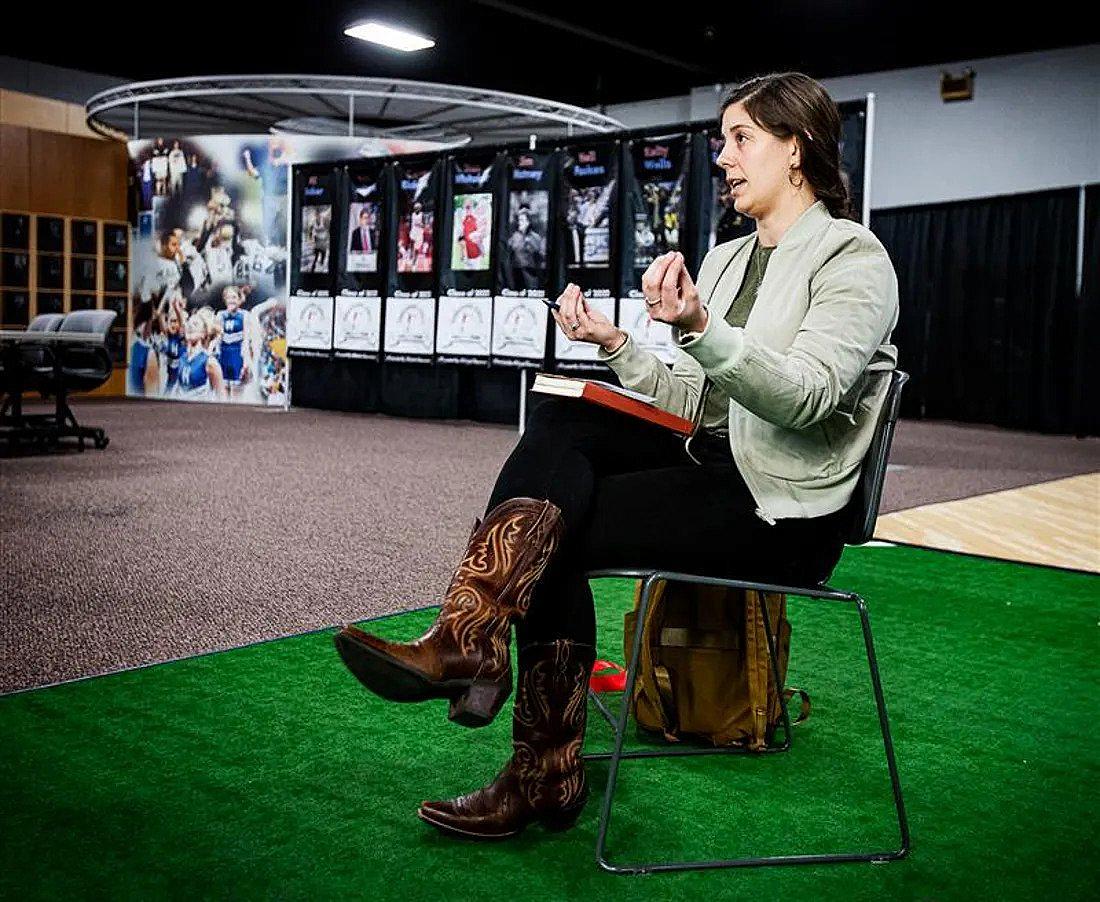Why The Courier Journal decided to investigate school sideline safety, and how we did it
The story was originally published in The Courier Journal with support from the USC Annenberg Center for Health Journalism’s 2022 Data Fellowship.

Courier Journal reporter Stephanie Kuzydym
JEFF FAUGHENDER, LOUISVILLE COURIER JOURNAL
In the fall of 2011, during my senior storytelling class at Indiana University, I read a piece in Sports Illustrated called "The Boy Who Died of Football," about a Louisville-area athlete who collapsed and died during a hot summer practice. His name was Max Gilpin.
Two years later, a football player from my Indiana hometown collapsed and died during practice. His name was Jake West, and he had an undetected heart condition.
I immediately thought of that story headline. Now I knew of two boys who "died of football."
That didn't seem normal.
Across the next decade as a sports reporter, I kept coming across more headlines of athletes who died.
In 2016, I started to compile a database of the few cases of athletes I'd come across, aptly naming it, "The Boys Who Died of Football."
Then on June 16, 2020, while I was working for a TV station in Cincinnati, a Northern Kentucky high school soccer player collapsed and died.
Everyone called it a tragedy. At this point in my research, I knew it had to be more. Healthy kids rarely just drop dead.
It started with a records request of Matthew Mangine Jr.'s autopsy. It became a project in Cincinnati that led me here, to The Courier Journal, where I received a grant from the University of Southern California's Annenberg Center for Health Journalism to dive deeper into data. That began a seven-month investigation, requesting CPR certification, venue-specific emergency action plans, annual membership applications and more from every school district in the commonwealth.
I requested those documents because following the two heat stroke deaths of Gilpin and Henderson County football player Ryan Owens, Kentucky passed a law to try to add some safeguards to high school sidelines, but the law had no accountability.
So, if Matthew Mangine Jr. ― who went to a private school with an athletic trainer and access to five AEDs ― could die, what risks were athletes facing across Kentucky?
And what about beyond Kentucky? Jake West died in La Porte, Indiana. I'd come to know his mom, Julie, and she kept telling me, "People will tell you this is rare. It isn't."
In January, following Damar Hamlin's collapse on Monday Night Football, my editors Rob Byers and Veda Morgan suggested I share the database of athlete deaths and make it public. We renamed it Deadly Games. That's when things really took off. I started to tweet more about the database. And from there, I got connected to two researchers who created their own databases and were willing to add their entries to mine.
There are more than 1,000 names in the database, and hundreds from just the last decade, but the questions remain the same: Why are young athletes still dying? And what can we do to make sidelines safer?
The databases used for this project are:
- Gold standard athletic care costs less than admission to most games
- Does your school have an athletic trainer?
- Does your Kentucky school have an emergency action plan that meets state requirements?
- Sudden death in athletes
